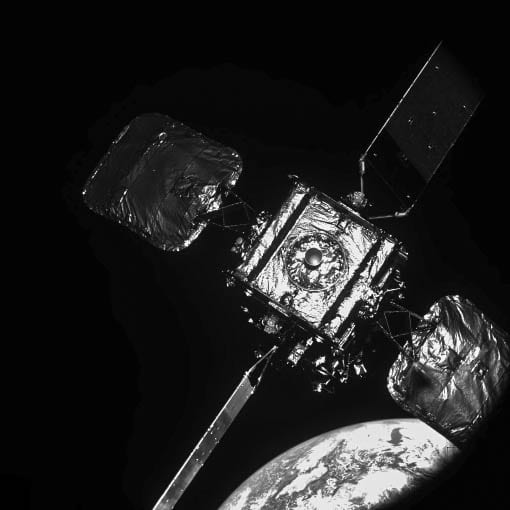
Image of the IS-10-02 satellite taken by the MEV-2 vehicle as it approaches docking in April 2021. Photo: Northrop Grumman
Northrop Grumman and is SpaceLogistics LLC subsidiary achieved another milestone in the work to commercialize orbital satellite service on Monday as the second mission extension vehicle (MEV-2) successfully docked with Intelsat 10-02 (IS-10-02). This demonstration follows the first The Mission Extension Mission (MEV-1) made a docking history with Intelsat 901 in February 2020, with two commercial satellites being launched into space for the first time.
But this docking was different in one key way. The MEV-1 docked with the IS-901 above the geostationary orbit (GEO) in a graveyard orbit before returning the satellite to service – while the MEV-2 was docked with the IS-10-02 directly at its GEO operational location.
SpaceLogistics vice president Joe Anderson said the docking isn’t necessarily more technically challenging, but Northrop Grumman is careful with pre-hop calibration approaches.
“From the customer’s point of view, this is a completely different ball game,” said Jean-Luc Froliger, Intelsat’s vice president of space systems engineering and operations. “We have customers transporting live traffic, we don’t want to disturb them. So you need to be extremely careful with every approach you take to avoid putting your services at risk. Docking a live satellite is a different level of complexity. You have to be extremely careful with your approach and Northrop Grumman did a great job. “
Froeliger said that only a slight deterioration in the radio frequency (RF) characteristics of the satellite was observed and none of the IS-10-02 customers, including the main customer Telenor satellite, experienced disturbances.
Both spacecraft are operational and robust. The MEV-2 will now provide five years of service to the Intelsat satellite before disconnecting and continuing to provide services for a new mission. Tom Wilson, vice president of Northrop Grumman and president of SpaceLogistics, said MEV-1 and MEV-2 have not yet been agreed after the initial five-year periods because the company wants to prove the technology before signing other customers.
Froeliger said the mission extended the life of the IS-10-02, which is 17 years old and in “virgin health”, except for running out of fuel. The satellite offers broadband and media distribution services to customers throughout Europe, the Middle East, Africa and the Americas.
“In-orbit service benefits us at Intelsat,” Froliger said. “It helps us realize greater value for our otherwise robust and highly efficient satellite, while focusing our capital costs on next-generation technology, such as the software-defined satellites delivered earlier this year.”
Northrop Grumman is also producing second-generation systems to introduce robotic service capabilities into orbit, which are scheduled to launch in 2024. The Mission robotic vehicle (MRV) can install the Mission Extension Pod (MEP) on a customer vehicle. Mission Extension Pod is a propulsion device that can provide six years of station retention to a typical GEO satellite. An MRV can install five to six of these extension modules each year, Anderson said.
He also mentioned future applications for the technology, including in-orbit debris removal and low-Earth orbit (LEO) satellite service.
Northrop Grumman and its subsidiary SpaceLogistics LLC were recognized by By satellite earlier this month for in-orbit service technology. The MEV-1 mission won the satellite technology of the year. Acceptance of the award on April 5, Anderson said the mission “feels that our industry is crossing the threshold into Space 2.0, where satellite service is becoming commonplace.”

